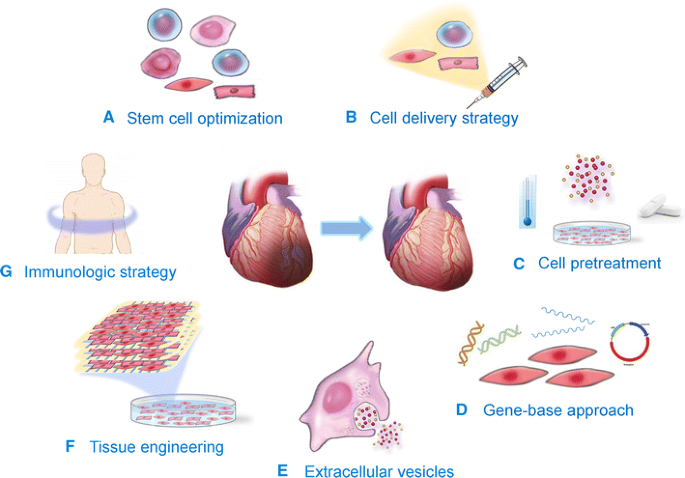Table of Contents

Could this speculative treatment reverse damages caused by a heart assault? The heart muscular tissue counts on a stable flow of oxygen-rich blood to nurture it and keep it pumping.
Though the heart is a tough body organ, the broken sections end up being unable to pump blood as efficiently as they when could. Individuals that have had a heart strike for that reason might deal with a life time of upkeep therapymedications and various other therapies targeted at protecting against an additional cardiac arrest and helping the heart work a lot more successfully.
In a study published last February in The Lancet, researchers treated 17 cardiac arrest people with an infusion of stem cells taken from their own hearts. A year after the treatment, the amount of mark tissue had reduced by about 50%. These results seem remarkable, yet are they a sign that we're obtaining near to perfecting this treatment? "This is an area where, depending upon which private investigator you ask, you can get incredibly various responses," states Dr.
"The field is young. Some research studies reveal only small or no renovation in heart feature, but others have actually shown dramatically enhanced function," he says. "We're waiting to see if various other physicians can likewise attain really good lead to other patients." Studies are generating such diverse results partly due to the fact that researchers are taking different approaches to harvesting and utilizing stem cells.
Lee. Extra lasting trials are needed to recognize the duty stem cell therapy will certainly have in dealing with heart problem. When might stem cell treatment end up being a common therapy for damaged heart muscular tissue? "Some detectives think this is simply a few years away," claims Dr. Lee. "And afterwards there are others that feel that there is a lot even more job to be done." Currently, stem cell therapy is available just to individuals who take part in a research test.
Heart condition is a major wellness issue and affects countless individuals each year. According to the Centers for Disease Control (CDC), heart problem eliminates one person every 33 secs in the United States and is the leading cause of fatality for males and females across the majority of racial and ethnic groups.
All about stem cell therapy and High Blood Pressure
Typical treatments (medicine, way of life changes, and surgical treatment) can help people handle symptoms and slow down the development of cardiovascular disease. What concerning after a heart-related event? Regrettably, they do not assist when it concerns repairing damaged heart cells. Heart stem cells promise to transform that circumstance. These cells have significant potential when it concerns heart regeneration and healing.

(divide to make more stem cells) and set apart right into cardiomyocytes (the cells within the muscle mass that make your heart contract) for myocardial fixing. That's particularly true after occasions like a heart attack, where parts of the heart muscle mass could pass away due to a lack of blood flow.
(the formation of brand-new blood vessels) to restore blood circulation. Plus, heart stem cells assist lower swelling, making it much easier for cells to recover and regenerate.

When heart cells are lost, your body typically can not regenerate them.
Some currently reveal positive outcomes, like improved heart feature and lowered mark tissue. When it concerns heart regeneration, scientists are researching a number of sorts of stem cells. Certainly, each has its own benefits and drawbacks:: These cells can transform right into any kind of cell, so they're highly functional.
Everything you need to know about stem cell therapy and Atherosclerosis
: iPSCs are created by reprogramming adult cells to imitate beginning stem cells. They give patient-specific treatment, which lowers the threat of rejection.: MSCs are much easier to gather, particularly from bone marrow or fat tissue, and since they're patient-specific, there's much less threat of denial. They likewise minimize swelling and speed up healing.
Navigation
Latest Posts
Are there supportive options for Heart Disease in today’s clinics?
Breaking down the use of stem cells for Arrhythmias
Are there supportive options for Atherosclerosis with stem cells?